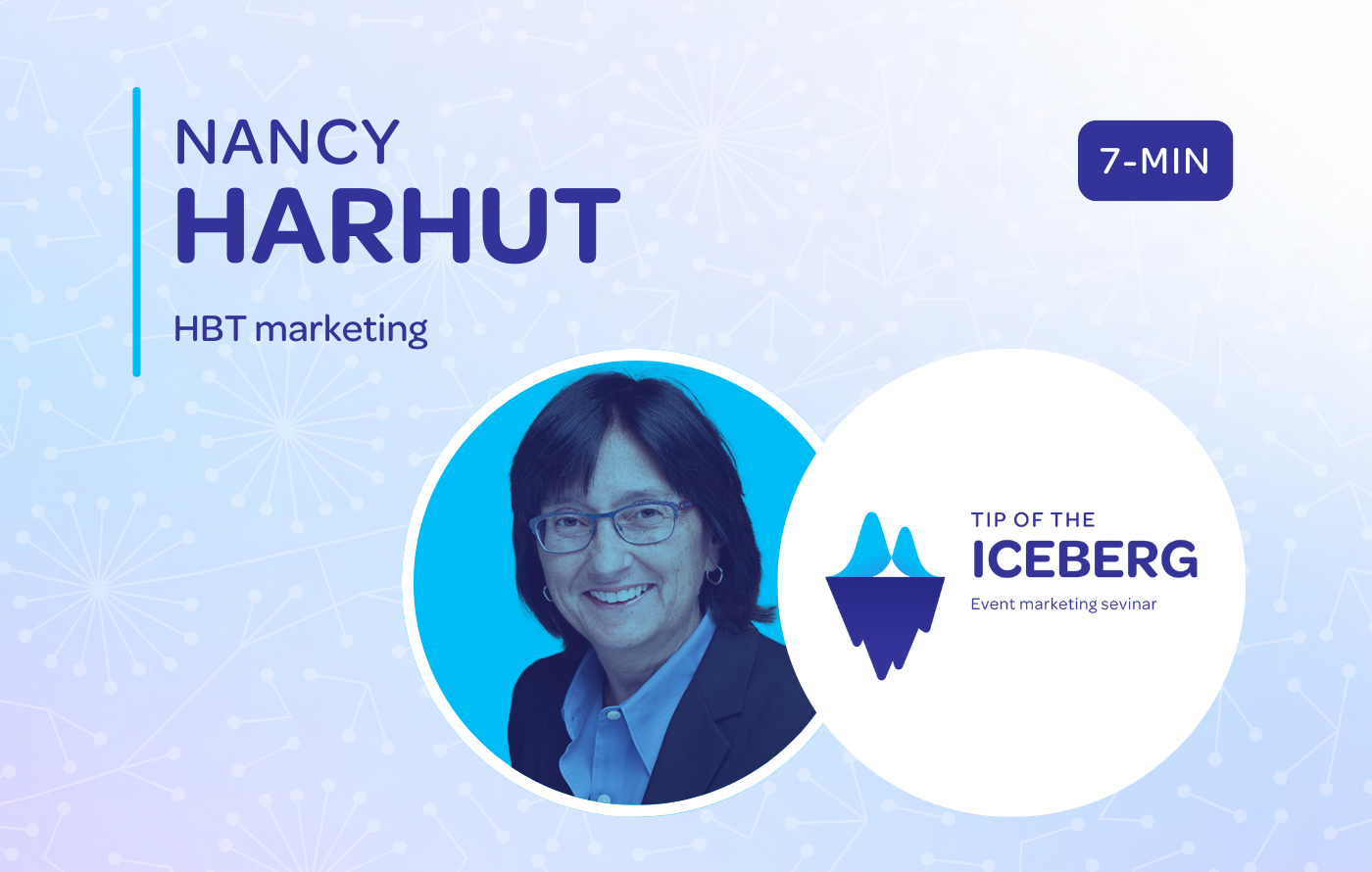Virtual events are here to stay. Even as the long-awaited “return-to-normal” continues to grow, there’s no denying that the landscape of the events space has been altered forever. Event marketers continue to make common virtual event mistakes. From monotonous webinars to poorly organized- online conferences, there’s a good chance you’ve attended at least one cringe-worthy event that had you walking away, thinking: “I hope my next event doesn’t go like that!”
This article was inspired by a LinkedIn post by Aleksandra Panyukhina, Experienced Marketing Lead at Pixelz Inc. We then decided to compile the list of blunders that triggered many comments and conversations to show you how to avoid the most common mistakes and practical ways to prevent them.
The following are real-life examples of things that have gone wrong since we learn best by learning from our mistakes, let’s dive in:
1. Miss the “where/when/what time/ and $$”
Aleksandra Panyukhina sparked the conversation with a post flagging the first mistake, “Not putting the date/time (and time zone!) of the event in the description, headers, and social media banners”. If you’re promoting an event, it’s essential to include the date and time of the event in the description, headers, and social media banners. Otherwise, people might show up at the wrong time or on a wrong day, leading to participant frustration.
For example, if you’re hosting a webinar at 10 am EST on Tuesday, include that in the event description, headers, and social media banners. That way, people in different time zones will know when the event is taking place, and they can adjust their schedules accordingly.
If you don’t include the date and time of the event in the promotional materials, you run the risk of people showing up at the wrong time or on the wrong day. So, ensure to include that information prominently in your event promotion materials.
In addition to where, when and what time, make sure to indicate clearly is this is a paid or free event.
2. Stay top of mind with reminders and notifications
Second, and very critical mistake, “Not sending a reminder the day of and right before the event starts. People are busy, help them get in on time!”- Aleksandra Panyukhina. If you’re hosting an event, you must send reminders to your guests in advance. This will help them to plan their schedules and arrive on time. However, don’t wait until the day of the event to send a reminder – send a few leading up to the event and beforehand. If possible, send a reminder right before the event starts. Merijn van Buuren added that not having an RSVP link to add to the calendar is a crucial step. It quickly puts it in the users’ calendars to ensure they get a reminder.
3. Prompt on-demand follow up
“Not updating the event page with “watch on-demand” flow right after the live event is over”, Aleksandra. By not updating the event page with the “watch on-demand” flow right after the live version is over, you miss out on an opportunity to extend the engagement with your current audience and attract a new one that might have missed the LIVE event. This also allows you to keep your event page active and working for you even after the event ends.
Set the attendee expectation; “Not putting it in the description or email whether or not it will be recorded and how to get the recording.” – Lori Reed
Sometimes there are events that you want to attend, but your schedule doesn’t permit it. Outlining in the description if the event will be recorded and how to obtain it post-event is so important and often overlooked. It’s also essential to communicate the program to all participants ahead of time to know what to expect. Your participants will thank you.
4. Turn content into repurposed short soundbites
“Sending the full recording of an event, rather than editing it into smaller, more digestible snippets, can often be more effective in consuming content on-demand and saving audience’s time.” – Russell Bradley-Cook of HubSpot App Partner Team.
Whether someone has the time to rewatch your event in its entirety or not, chances are they don’t. However, you can repurpose that material into a series of smaller videos, this will not only engage the participants again, but you can utilize these snippets for future events or attract more external viewers as you can share elsewhere across your social media channels. Obviously, you want to highlight some truly compelling moments that occurred during your webinar recording, so people get excited about tuning in and seeing the rest of it.
5. Add SMS as an additional touch point
In today’s fast and furious realm of technology sometimes a text is just as efficient. For Holly Shields at Savvy & Co Real Estate, she suggests to “utilize text, not just email” when communicating with potential attendees. Just relying on email can be a mistake, as people may not see the message or accidentally delete it. Using text can help ensure that your message gets through.
6. Factor in your people in influencing attendance
“Neglect to ask registrants to invite someone and leverage their community”–Rachel Stephan, founder of Snöball word-of-mouth marketing. One channel event marketers often neglect is leveraging the power of their people and their circle of influence to drive registrations to your event. You are missing out on the key opportunity to increase your reach and grow your event. Snöball mobilizes attendees, sponsors, and speakers to get more butts in seats and eyeballs on screens through the power of word-of-mouth.
7. Proof-read, spellcheck, then check again
One of the most common mistakes in writing content is not proofreading their work. “Grammar and spelling mistakes” are the biggest bone of contention for Adam Haesler. It is important to take the time to review your content for any grammar or spelling errors before hitting publish. Neglecting details like this reflects badly on even the most amazing event.
8. Start and finish on-time
One of the main things to do when hosting a virtual event is to make sure that it “runs on time”– Shenyana Lim from Koinly. This means having a tight schedule for all presentations, performances, and other activities. If you’re not careful, your virtual event can quickly run over time, frustrating everyone involved. If you need to make the changes or adjustments, be sure to communicate them to all participants to be easy for everyone to be on the same page.
9. What’s in it for me (WIIFM)
For Matt Snodgrass, NOT having a clear “what you will learn” bullet points on the landing page.” is an epic fail for a virtual event planner. The last thing you want to do is waste your participants’ time with topics that don’t reflect their needs. Having clear and concise information on your home page of your event listing is so important. It will allow the participant to make an educated decision on whether they want to invest the time in your seminar. If you have a very open-ended agenda, perhaps intaking questions prior to your session will help to create a more engaging atmosphere around the topic most important to your audience. The answers can guide you on how to organize the agenda.
10. How did it go?
What’s better than hearing about how your virtual event went, straight from the horse’s mouth? Pallab Ghosh agreed that post-event feedback has always been a reliable source of information for event planners to learn about the success of their event, where improvements can be made, and suggestions attendees may have for the future. No matter how successful your event is, there is always room to improvement and growth.
Bottom line
No one can pretend to be an expert in Virtual Events. The past 2 years, virtual events became the lifeline for #eventprofs. Two years ago online/virtual became THE event lifeline and new to some. Our industry continues to evolve rapidly, with changes each quarter affecting your event’s performance and ROI In-person and online. The goal is to keep experimenting and leaning from our mistakes, that’s how we evolve.
Looking to leverage your audience to market your event? Schedule a 17-min chat.




